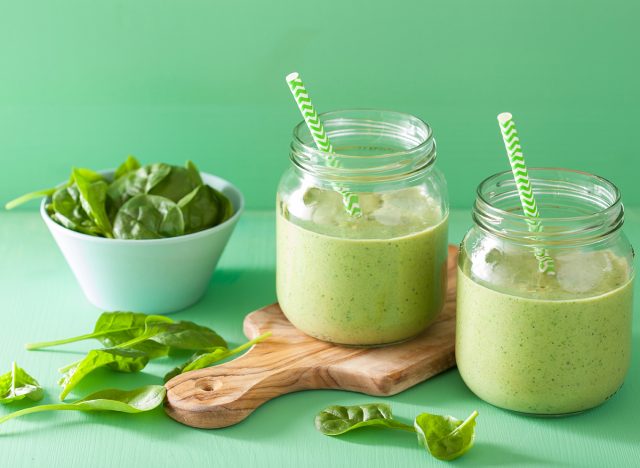Kidney stones can be caused by not drinking enough water, exercising either too much or too little, eating food with too much salt or sugar, consuming high amounts of animal protein without many vegetables, and even obesity or weight loss surgery. If you do develop kidney stones, there are ways to help the process move along, including watching what you drink and eat.
According to Sydney Greene, MS, RD, a registered dietitian and member of our Medical Expert Board, the best foods to eat or avoid when experiencing kidney stones will depend on the type of kidney stone you are dealing with. The most common type of kidney stone experienced in adults is calcium oxalate stones; if we’re talking about these particular stones, the best food you can eat is a combination of calcium-rich and oxalate-rich foods.
“One of the best dietary changes to make if experiencing these types of kidney stones is to eat calcium-rich foods with oxalate-rich foods,” says Greene. “When consumed together, the calcium and oxalate are more likely to bind to one another before entering the kidneys.”
According to The National Kidney Foundation, oxalate is naturally found in many foods, including fruits and vegetables, nuts and seeds, grains, and legumes. A common misunderstanding is that eliminating oxalate-rich foods in your diet will reduce the chances of forming calcium oxalate kidney stones. However, while not technically incorrect, this approach isn’t the healthiest way to go about things.
The Foundation further suggests that calcium may tend to get a bad rap because of the name of the type of kidney stones. However, a diet low in calcium may actually increase your risk of developing kidney stones, which is why it’s recommended to not reduce your calcium intake. Instead, focus on cutting back on the amount of sodium in your diet.
READ RELATED: Insomnia breakthrough as scientists discover the two most effective drugs yet


The combination of oxalate and calcium is more likely to bind to one another in the stomach and intestines before the kidneys begin processing. This makes them less likely to develop into kidney stones.
Greene continues to explain that there are ways to combine both calcium-rich foods and oxalate-rich foods in your everyday diet.
For example, green smoothies are a great way to include these types of food. Greens, especially spinach, tend to be high in oxalate. To get more calcium into your diet, blend greens with dairy milk, cow’s milk kefir, or a nut milk fortified with calcium to get the proper nutrients.
For more healthy eating news, make sure to sign up for our newsletter!
Read the original article on Eat This, Not That!
Kayla Garritano
Source:










